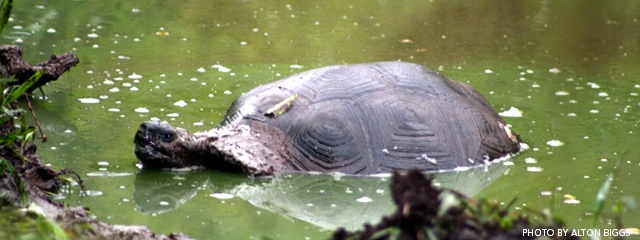A Look at Conservation Efforts by the Charles Darwin Foundation
Home to some of the most beautiful and memorable wildlife and nature in the world, the Galapagos is a top destination for many. Visitors travel to the islands to admire and enjoy this little piece of paradise, but what they may not realize is how much effort goes into conserving, protecting and researching the living things that inhabit the Galapagos.
The Charles Darwin Foundation for the Galapagos Islands is a non-profit scientific organization that focuses on providing scientific knowledge and assistance to encourage conservation of the islands. The CDF was founded over 50 years ago under Belgian Law. Since then, it has been working closely with the Ecuadorian government institutions to do everything possible to encourage conservation of the animals and natural resources of these islands. Over 100 scientists, researchers, volunteers, educators and other staff members work with the CDF at the Charles Darwin Research Station on the island of Santa Cruz in the Galapagos. About 90% of the staff is Ecuadorian. This is because the CDF is committed to training Galapagos residents as future researchers for the good of the islands and the country of Ecuador as a whole. Researchers and scientists are always making strides to improve conservation efforts and educate people with the best scientific knowledge of the area.
The main areas that researchers focus on at the CDRS are invasive species, sustainability, and conservation management. In the work done in 2014 alone, we are able to see how much effort these researchers put into protecting the Galapagos. In 2014 staff at the CDRS monitored 120 different species, planted 5,000 endemic and native seedlings, tagged 365 sharks, and spent 35,000 hours researching the parasitic Philornis Downsi Fly. The Mangrove Finch is a species of bird that is classified as critically endangered.
Last year, the first Mangrove Finch hatched at the CDRS, and since then 13 more have hatched. Another very important part of the CDRS is the research and conservation of the giant tortoises. Tortoises here range from newborn to over 100 years old. From November 28 to December 7, 2015, Holbrook has planned an expedition for you to visit the Galapagos and experience the all that it’s islands has to offer. One of the highlights of the trip is a visit to the Charles Darwin Research Station.
So, if you are interested in not only the natural beauty of this area but also the conservation and research efforts that go into protecting the Galapagos, sign up for the trip or visit our website to browse our full collection of Galapagos ecotours you can join or customize.



